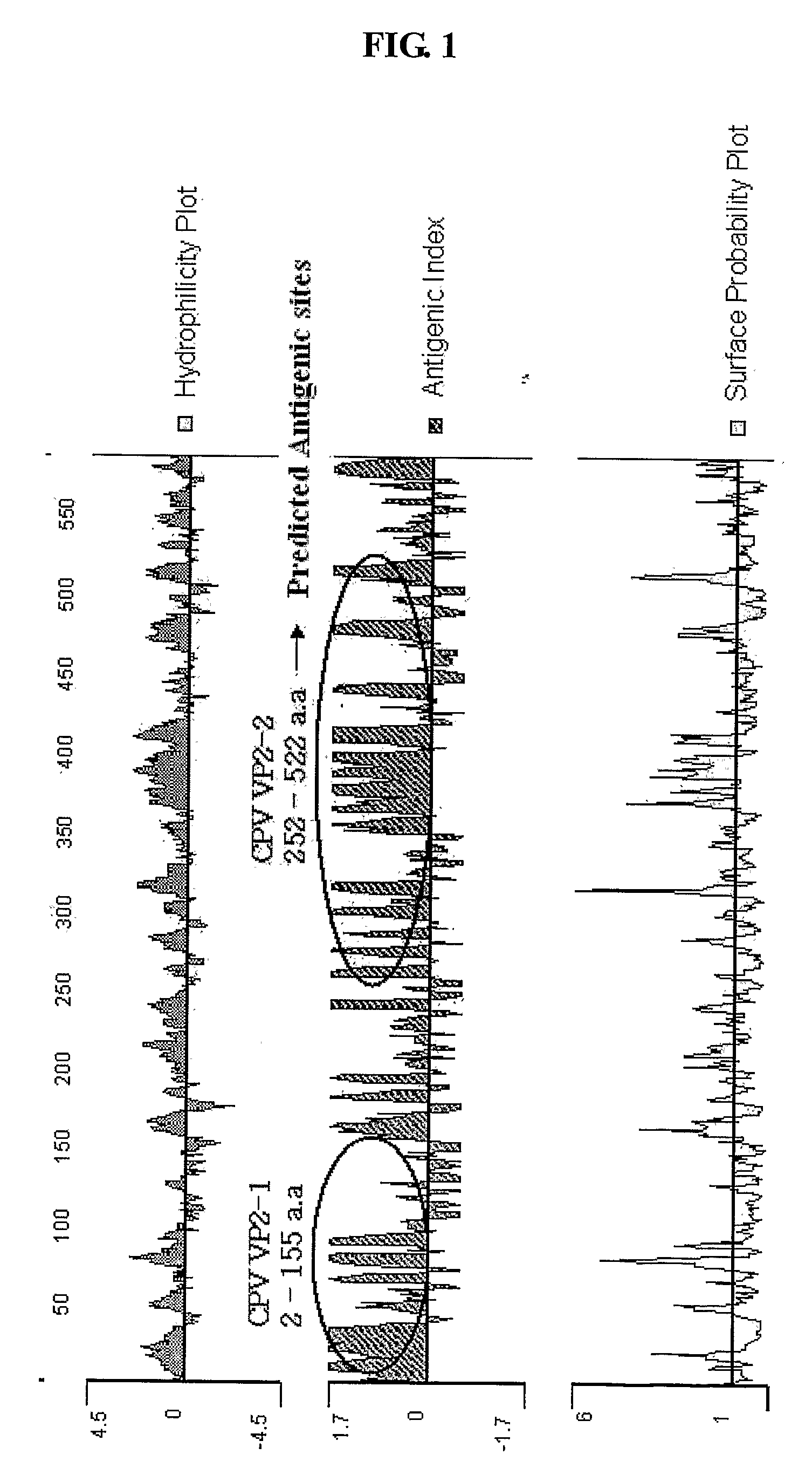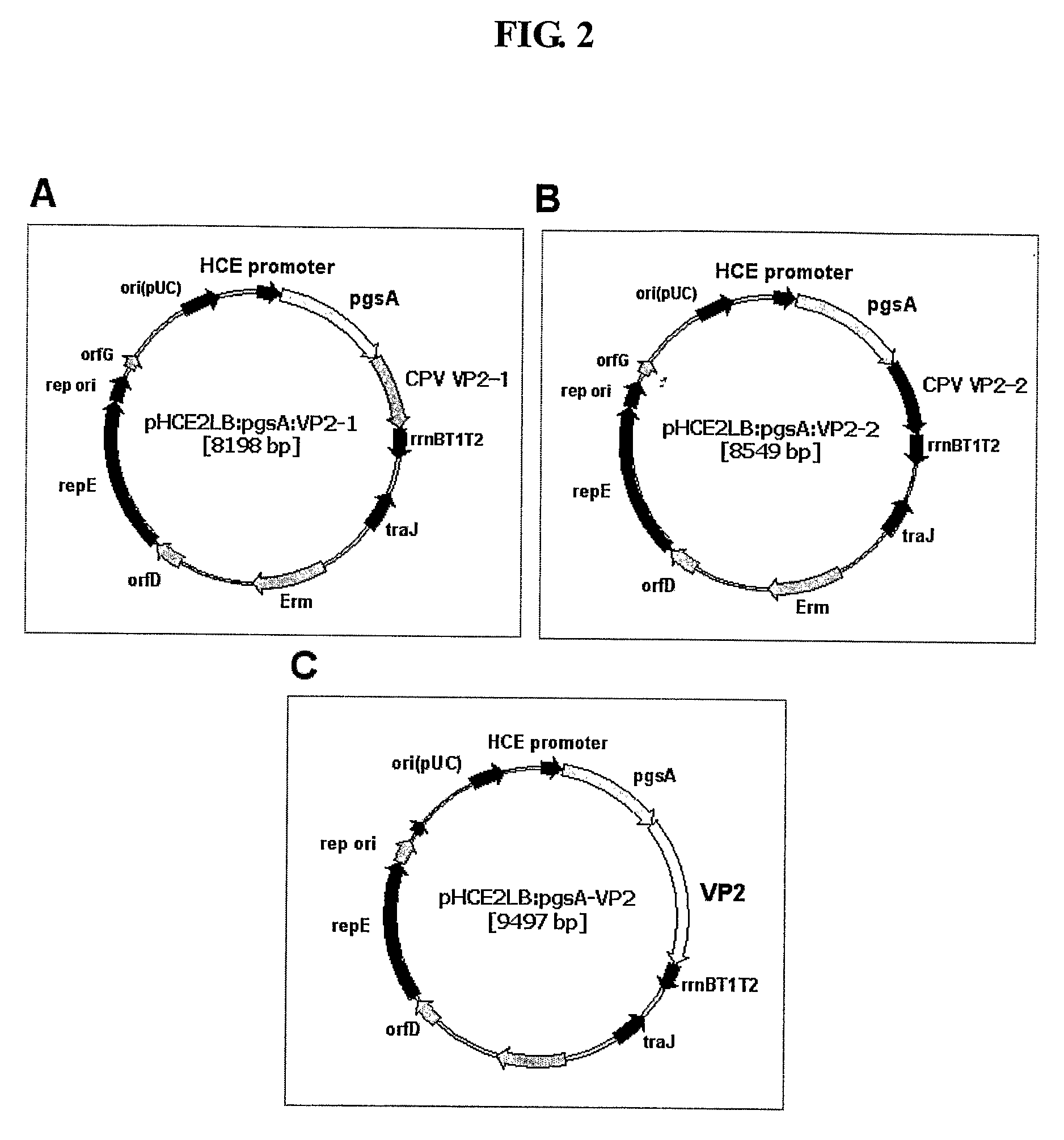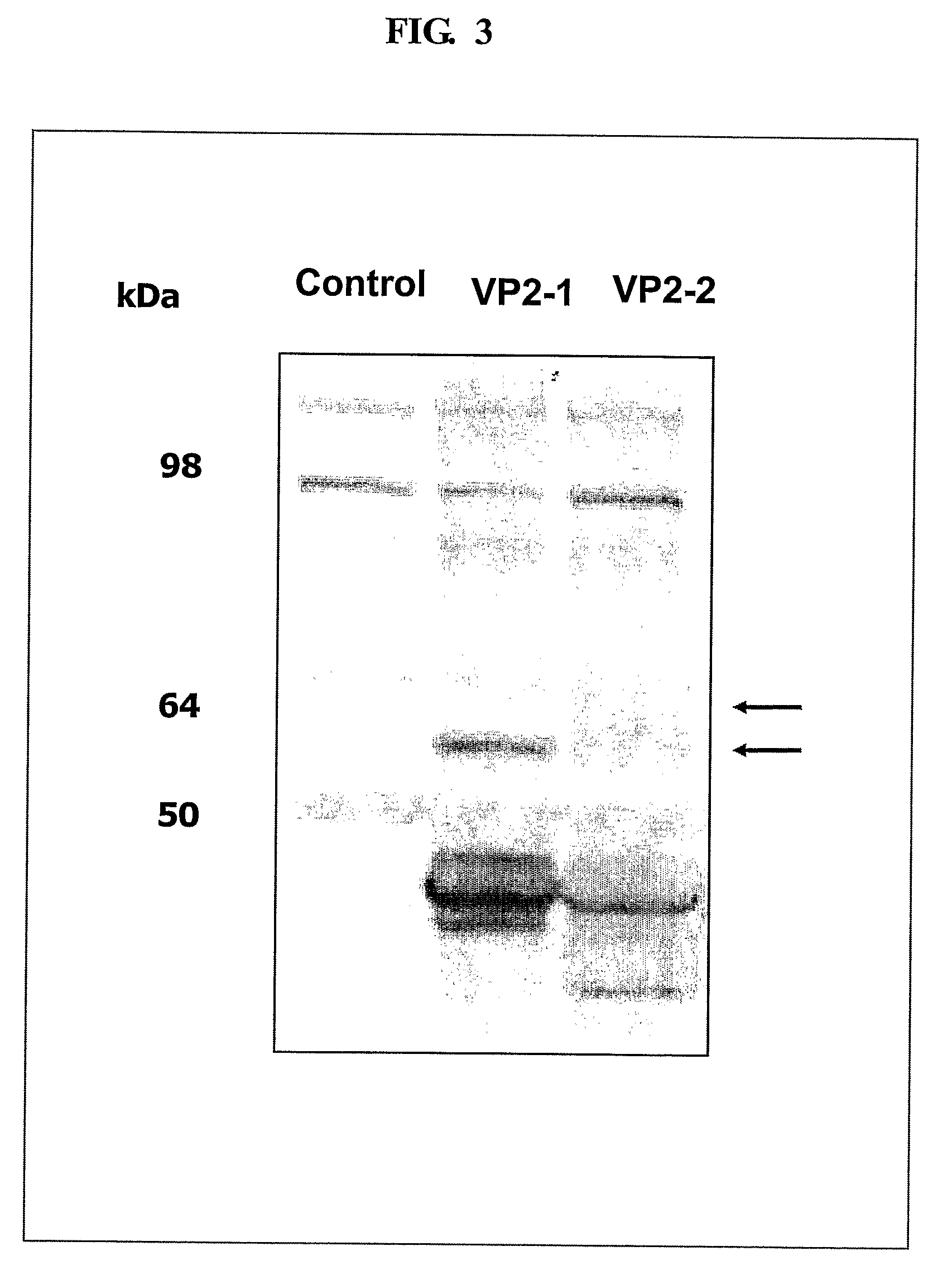Cell surface expression vector of parvovirus antigen and microorganisms transformed thereof
a parvovirus and surface expression technology, applied in the direction of antibody medical ingredients, peptide sources, peptides, etc., can solve the problems of difficult to produce a high-titer vaccine, high mortality, and undeveloped surface anchoring motif, so as to prevent infection by mucosal immunization and effectively induce the formation
- Summary
- Abstract
- Description
- Claims
- Application Information
AI Technical Summary
Benefits of technology
Problems solved by technology
Method used
Image
Examples
example 1
Selection of Antigenic Site Gene in Capsid Antigen Protein VP2 of Canine Parvovirus
[0037] The capsid antigen protein VP2 of canine parvovirus is a glycoprotein consisting of 586 amino acids. In the case of canine parvovirus on which many studies have been made, capsid antigen protein VP2 has been mainly studied as a target antigen of a vaccine for inducing and preventing virus infection.
[0038] Accordingly, a more effective antigenic fragment was selected by the protein analysis and structural analysis of the capsid antigen protein VP2 of canine parvovirus.
[0039] Specifically, the proteins of the antigenic fragment of canine parvovirus capsid antigen protein VP2 were analyzed by a hydrophilicity plot, which is the Kyte-Doolittle method, an antigenic index, which is the Jameson-wolf method, and a surface probability plot, which is the Emini method, and then, VP2-1 and VP2-2 of the whole capsid antigen protein VP2 of canine parvovirus were selected (FIG. 1).
[0040] VP2-1 having an a...
example 2
Construction of Surface Expression Vector pHCE2LB:pgsA:VP2-1
[0041] Using pgsA among outer membrane protein genes pgsBCA involved in the synthesis of poly-gamma-glutamate derived from Bacillus sp. strains, vector pHCE2LB:pgsA:VP2-1 capable of expressing the antigenic fragment VP2-1 of canine parvovirus capsid antigen protein VP2 on the surface of gram-negative and gram-positive microorganisms as hosts was constructed.
[0042] First, the diarrhea feces of dogs suspected of having canine parvovirus infection in a domestic veterinary hospital was collected, from which virus was isolated. Then, from the isolated virus, virus DNA was extracted. In order to introduce a gene encoding the VP2-1 of CPV into a transformation vector for surface expression (KCTC 10349BP of Human papilloma virus antigen L1), which uses gram-negative and gram-positive microorganisms as hosts and includes an HCE promoter which is a constant high expression promoter in gram-negative and gram-positive general purpose...
example 3
Construction of Surface Expression Vector pHCE2LB:pgsA:VP2-2
[0045] Using pgsA among the Bacillus sp. strain-derived outer membrane protein genes pgsBCA involved in the synthesis of poly-gamma-glutamate, surface expression vector pHCE2LB:pgsA:VP2-2 which can express the antigenic fragment VP2-2 of canine parvovirus capsid antigen protein VP2 on the surface of gram-negative and gram-positive microorganisms as hosts was constructed.
[0046] First, in order to introduce the antigenic fragment VP2-2 of canine parvovirus capsid antigen protein VP2, the surface expression vector pHCE2LB:pgsA:VP2-1 constructed in Example 1 was cut with BamHI and KpnI to remove the VP2-1 gene, thus preparing surface expression vector pHCE2LB:pgsA.
[0047] In order to introduce a gene encoding the VP2-2 of CPV, PCR was performed using a canine parvovirus gene isolated from dogs as a template, and oligonucleotide having base sequences of SEQ ID NO: 3 (5′-cgc gga tcc cca gta cac tta cta aga-3′) and SEQ ID NO: 4 ...
PUM
| Property | Measurement | Unit |
|---|---|---|
| particle diameter | aaaaa | aaaaa |
| pH | aaaaa | aaaaa |
| fluorescent antibody technique | aaaaa | aaaaa |
Abstract
Description
Claims
Application Information
 Login to View More
Login to View More - R&D
- Intellectual Property
- Life Sciences
- Materials
- Tech Scout
- Unparalleled Data Quality
- Higher Quality Content
- 60% Fewer Hallucinations
Browse by: Latest US Patents, China's latest patents, Technical Efficacy Thesaurus, Application Domain, Technology Topic, Popular Technical Reports.
© 2025 PatSnap. All rights reserved.Legal|Privacy policy|Modern Slavery Act Transparency Statement|Sitemap|About US| Contact US: help@patsnap.com



